The Oppo Find N2 is amazing — here's 5 ways it beats Galaxy Z Fold 4
This just became my favorite foldable phone
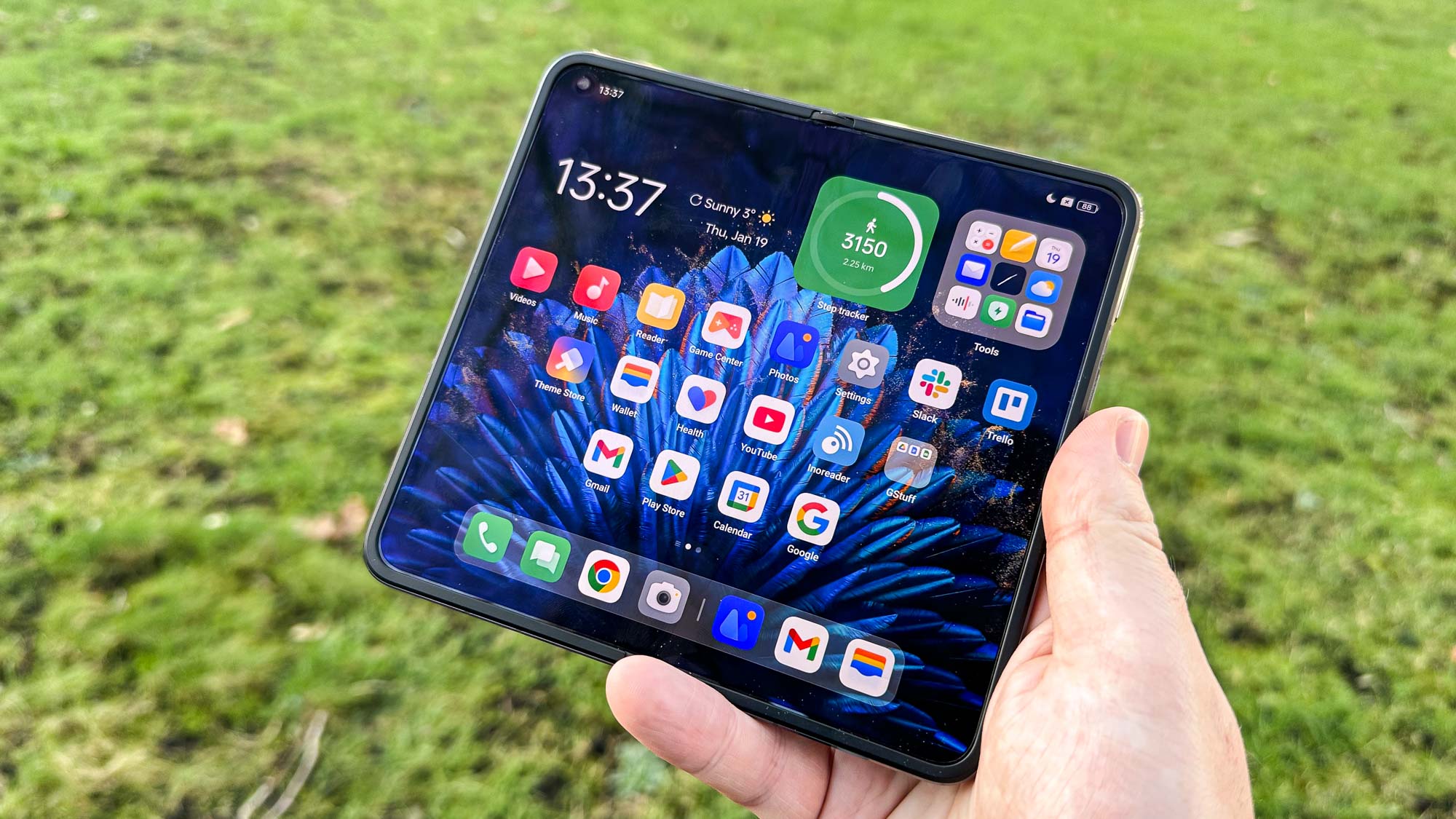
My time with the Oppo Find N2 has put into perspective several problems with the Samsung Galaxy Z Fold 4, the phone that was my favorite foldable of 2022 and tops our best foldable phone list. Samsung's foldable was been in my pocket for nearly the whole time since it launched, but Oppo's mechanically superior product has had me questioning that decision.
The Galaxy Z Fold 4 and Find N2 are similar products, but the Oppo foldable feels more refined and offers some features that Samsung simply can't match. Equally, there are a few ways that the Z Fold still comes out on top, but overall Oppo has shown it's taken the lead on foldables development.
While the newly revealed Oppo Find N2 Flip is getting some well-deserved attention, the larger Find N2 deserves more time in the spotlight, too. We've broken down what makes the Oppo Find N2 so good compared to the Galaxy Z Fold 4, so you can see where Samsung's lacking and where it needs to move next in order to keep up.
Design
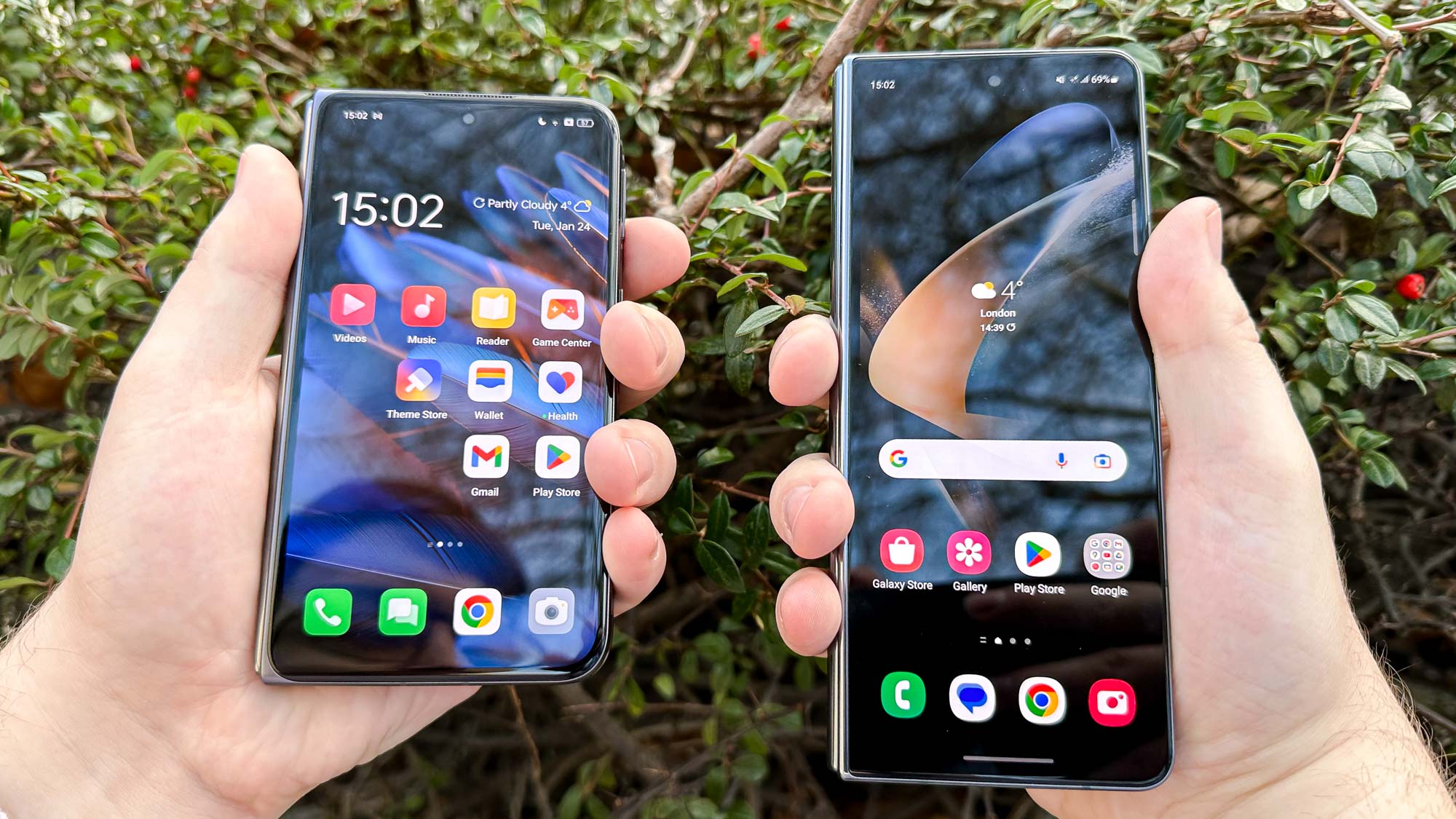
Standing at 5.4 inches when closed and 7.1 inches when open, the Find N2 is possibly the optimal foldable size for most people. It's large enough to contain a display bigger than a regular smartphone on its inside, and to carry a full suite of flagship-grade cameras, but it's more pocket friendly than something of the Galaxy Z Fold 4 or Honor Magic Vs' size, plus it's a whole ounce lighter than the Z Fold on top of that.
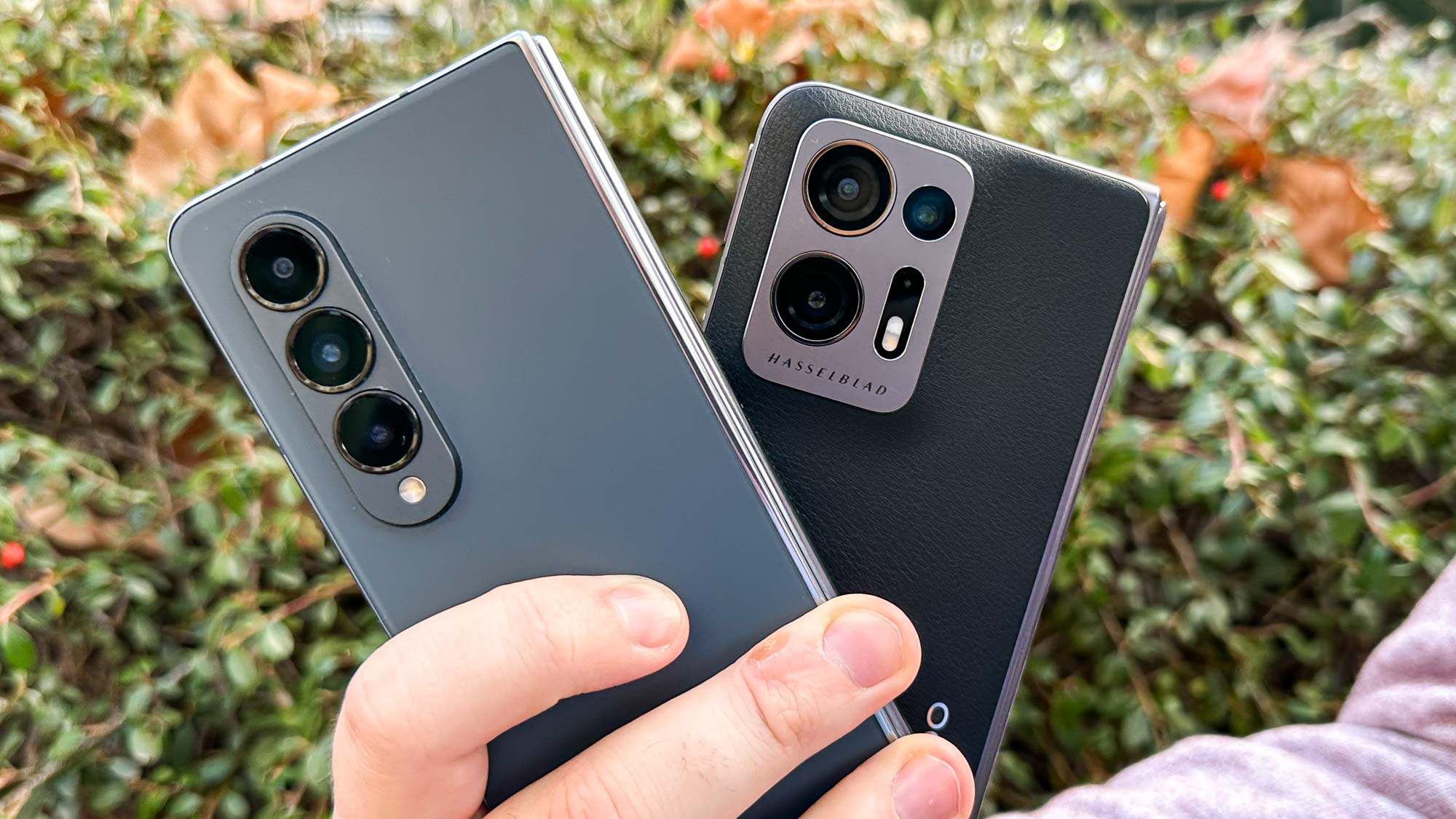
The hinge is beautifully smooth to operate, and doesn't make disconcerting noises like the Galaxy Z Fold 4 does. The Find N2 offers a similar self-standing mode called FlexForm as well, which can prove handy if you want to watch a movie or make a video call without propping the phone up against something else.
My black, vegan leather-backed model feels classy and grippy, but if you prefer your smartphone to feel more normal, there's a green glass version available. That is fewer color choices than the Galaxy Z Fold 4 but Samsung doesn't offer any material other than glass for the back.
Displays
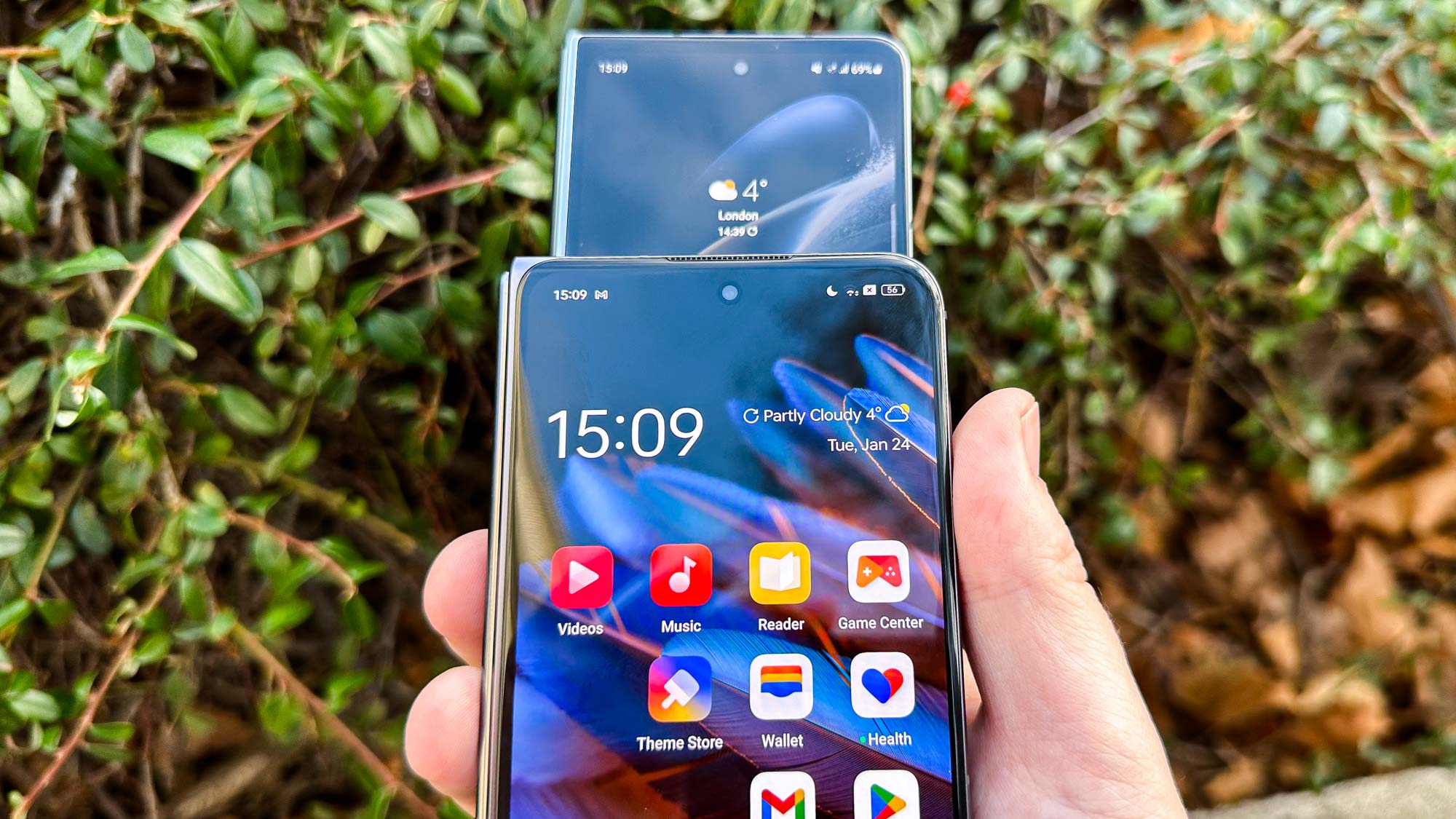
Oppo's Find N2 is smaller both inside and outside compared to the Galaxy Z Fold 4, but crucially it's also wider, making it much easier to use when the phone's closed, and more like a regular phone or tablet held horizontally when open.
Sign up to get the BEST of Tom's Guide direct to your inbox.
Get instant access to breaking news, the hottest reviews, great deals and helpful tips.
The Galaxy is either an awkwardly narrow and thick phone when closed, or an almost-square when open, which does give it some benefit when you're trying to multi-task, or just want the largest possible display in your foldable, but does make the phone less pocket-friendly.
The Find N2's display is unusual to use since it feels quite long compared to the squarer displays of the Galaxy Z Fold 4 and the like. It makes setting up apps a bit difficult, too, but once you've decided whether tablet mode or phone mode works best for a specific app, the Find N2 will remember which version you've picked the next time you open it.
The Oppo Find N2's display is also brighter according to official specs, with 1,550 nits on the inside and 1,350 nits on the outside, compared to the 1,200 nits that Samsung promises for the Galaxy Z Fold 4 (while we only measured 905 nits in our own testing). Anecdotally, it certainly looks like the Find N2 is brighter than the Z Fold 4 when they're side-by-side. But we'll have to get some lab testing done to back that observation up.
The hinge and display crease
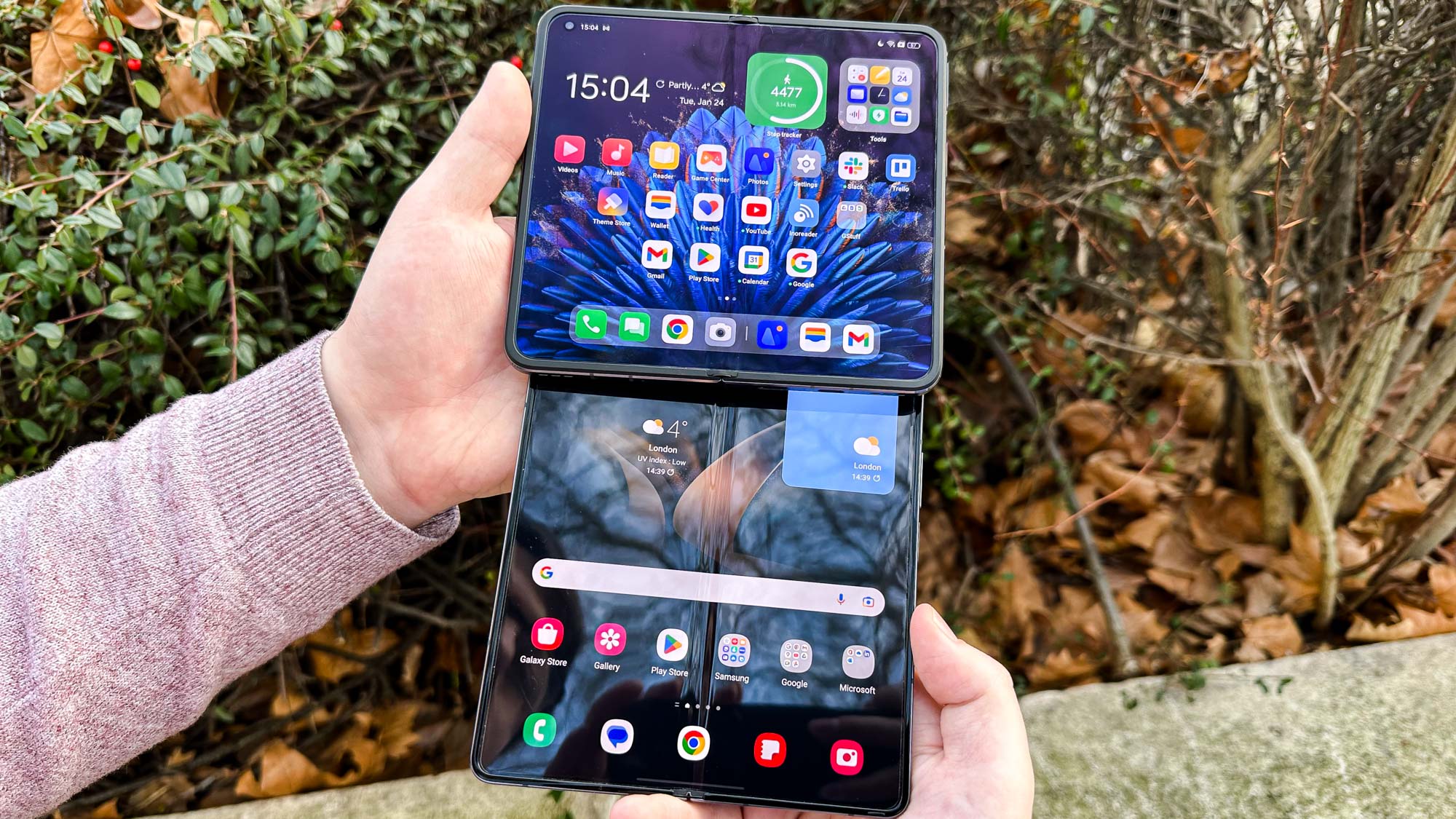
The big question with any foldable's inner display is what the crease looks like. And on the Oppo Find N2, it's barely noticeable. Oppo's using a "waterdrop" hinge design that lets the display bend less sharply when folded up, and as a result, you get a wider but shallower crease. It's less likely to catch the light than the deeper crease in the Galaxy Z Fold 4, plus less obvious to the touch if you're swiping across the display's center line.
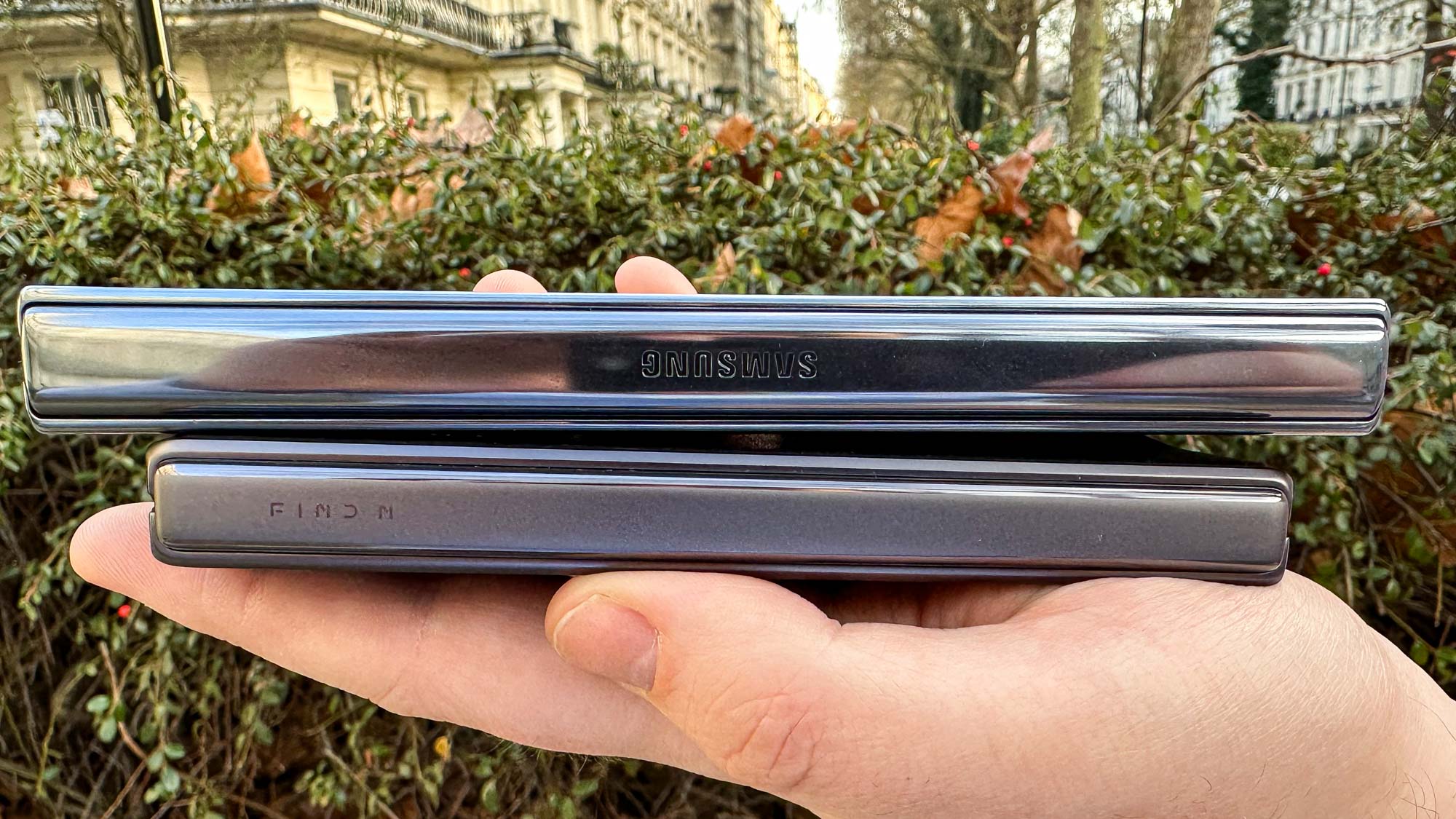
The Find N2's hinge feels nicer to operate, too. It moves smoothly from closed to open and back again, without the unsettling creaking that the Galaxy Z Fold 4 produces. Both can be used partially open too, letting you prop the phone up somewhere and watch things on the top part of the screen, or use two apps in tandem at right angles to each other.
The Cameras
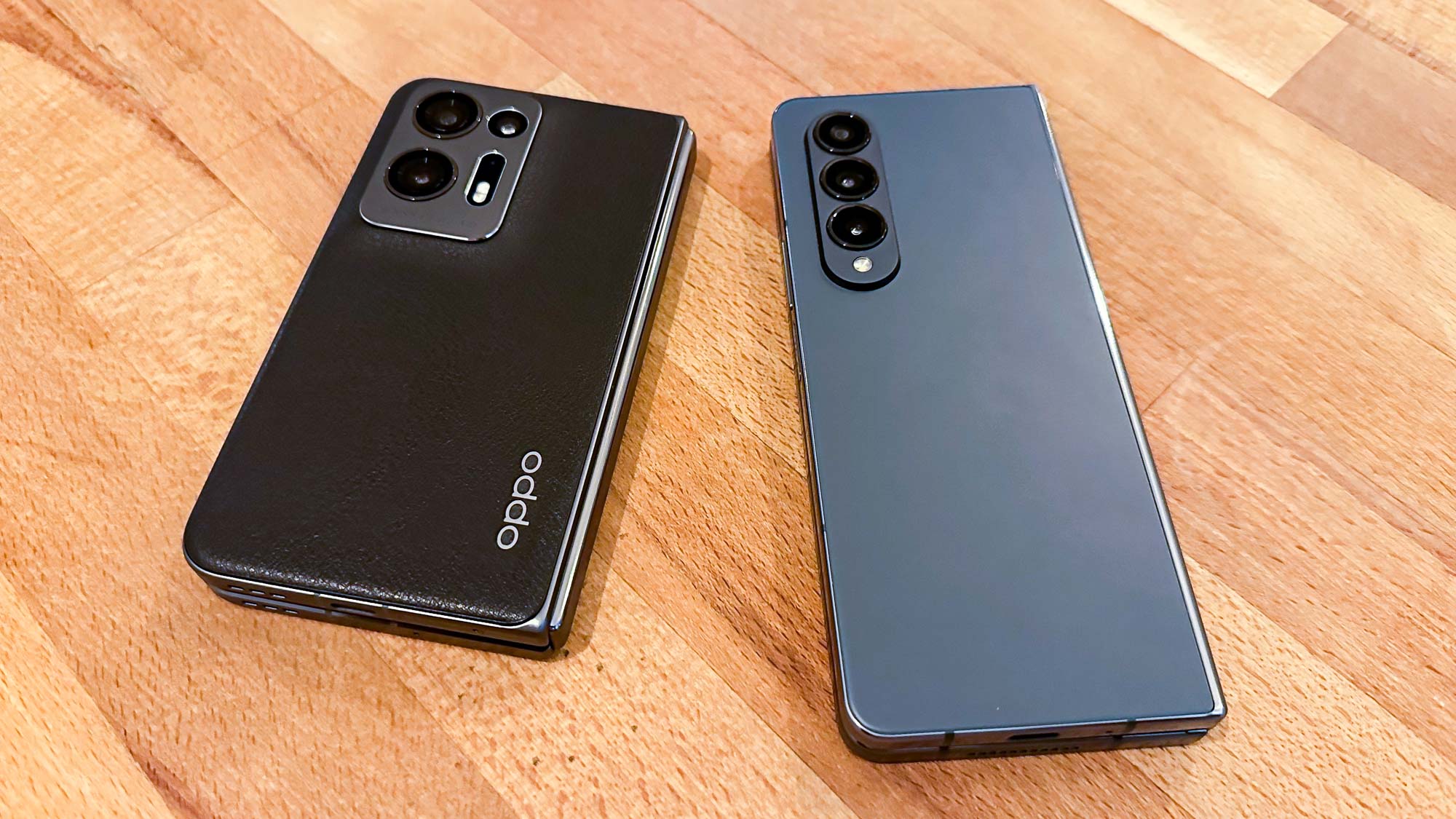
Both the Galaxy Z Fold 4 and the Find N2 have three cameras on the back, but the Oppo foldable has a definite resolution advantage, plus an extra trick in the form of Hasselblad color science like other Oppo and OnePlus flagships.
Both phones use a 50MP main camera, but the Find N2 produces an overall brighter image of this basement bar. It misses some of the rich colors that Samsung captures in the wooden furnishings though.
It's the same story in this close up of a cappuccino and a slice of milhojas on a wooden serving plate. This time, however, the Samsung definitely overdoes the color saturation, making everything look way too brown-orange to look appealing. I much prefer the Oppo's take on this tasty pair of subjects.
The selfie cameras on the two phones' cover displays are a 32MP sensor in the Find N2's case and a 16MP for the Galaxy Z Fold 4's. I like the coloration of both images, particularly the rich blacks of the Oppo shot, although I'm less certain about the smoothening it's applied to my skin.
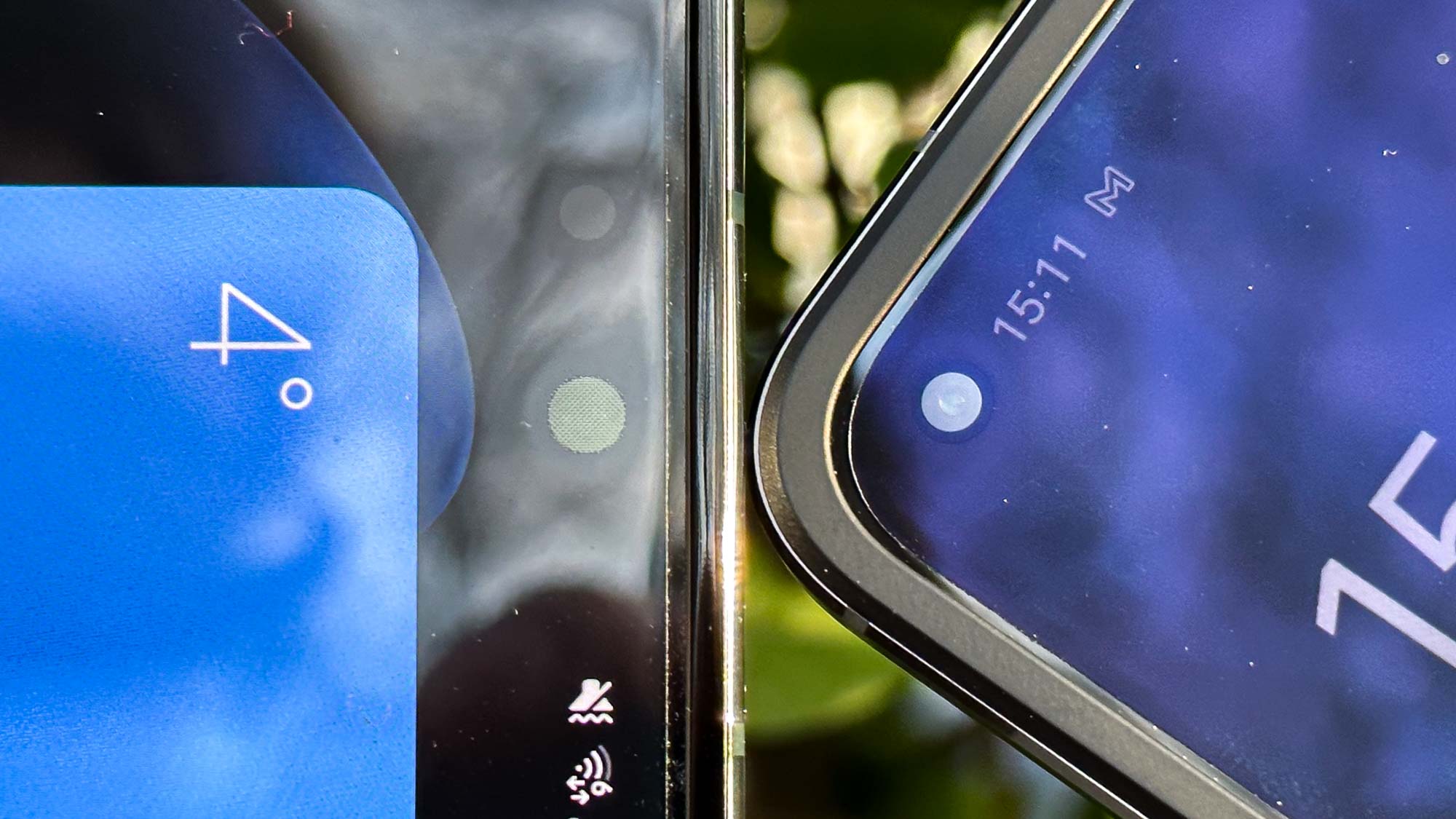
The inner selfie camera on the Find N2 is a 32MP sensor just like the outer one. The Galaxy Z Fold 4 has an under-display 4MP sensor, which is less obtrusive but doesn't produce nearly as pleasant an image.
The Samsung selfie shot taken with its interior camera is grainy with muted colors that will work fine for video calls, but isn't a camera you'll want to take selfies with. The Find N2's shot is more vibrant and sharper.
For telephoto duties, the Find N2 is armed with a 2x 32MP camera, which beats the Galaxy Z Fold 4's 10MP 3x camera on resolution, but loses on magnification. I tried both cameras at both zoom levels while looking at this animated clock, and found unsurprisingly that the Oppo image is sharper, thanks to the extra megapixels.
In both the 2x zoom image and in the 3x zoom image, the Oppo shows much blocker coloring, particularly noticeable in the clock's bezel. That did cost it some detail compared to the Samsung images though.
In this ultrawide image of a public art piece, we can see how the 48MP Find N2 sensor has better captured the color in this image, particularly in the highlights on the shiny surface of the sculpture. The Galaxy Z Fold 4's 12MP sensor has captured an overall brighter image, which could have some benefit in certain shots, but isn't making this piece look better due to the lack of color.
Some of the comparisons' winners above will be due to personal taste. But I do think that based on the samples, Oppo's armed its foldable with the more versatile set of cameras.
Battery and Charging
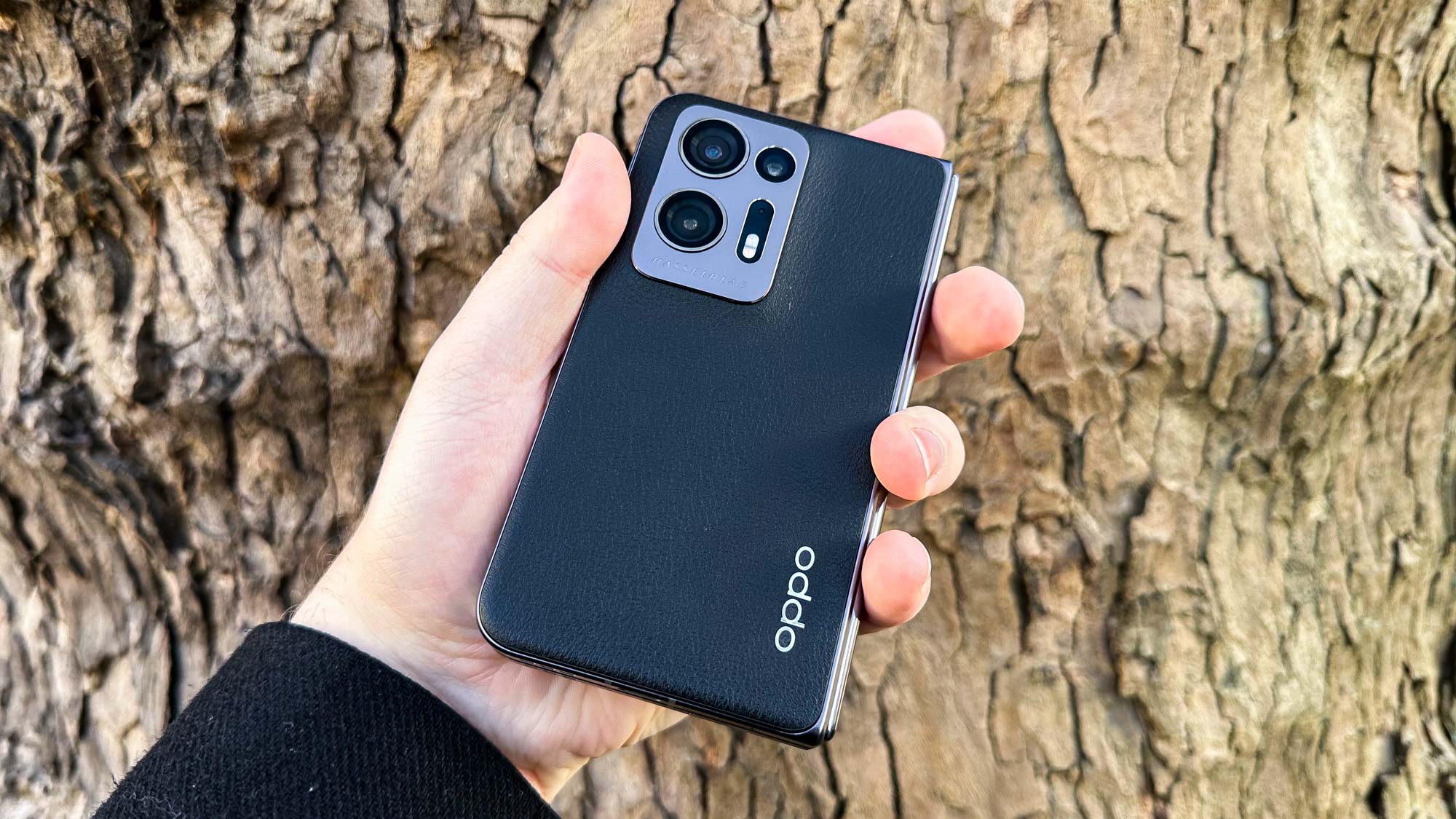
Oppo was a bit more generous with the Find N2's battery than Samsung was with the Galaxy Z Fold 4's. The Find foldable has a slightly larger battery at 4,520 mAh to the Galaxy Z Fold 4's 4,500 mAh, which becomes more impressive when you factor in the phones' size difference.
After performing my mini battery test on both foldables (playing a YouTube video at middle brightness and volume for multiple hours), it took the Find N2 4 hours and 1 minute to drain 30% battery after watching YouTube over Wi-Fi on the main inner display. It took the Galaxy Z Fold 4 3 hours and 13 minutes to drain the same amount.
Oppo wins again on recharge speed, too. The included 67W charger lets the Find N2 fill up in 49% in 15 minutes, 85% in 30 minutes and 100% in 43 minutes. The Z Fold 4, which has a rather sluggish 25W wired charging maximum, only gets to 42% in half an hour, and you don't even get a charger in the box.
There's only one area where the Galaxy Z Fold 4 scores points back, and that would be wireless charging, since the Samsung foldable supports it while the Oppo does not. It's an odd thing to leave off of a premium phone like this but fortunately the wired charging and battery life more than make up for it.
How the Oppo Find N2 loses to the Galaxy Z Fold 4
Oppo's made a truly great foldable with the Find N2, but it's not flawless. Indeed, there are some very good reasons why you would be better off with a Galaxy Z Fold 4 after all.
First off, the Find N2's only for sale in China, unlike the global Find N2 Flip. That means you have little chance of getting one through your usual retailers or carriers, unless you live in China or export one.
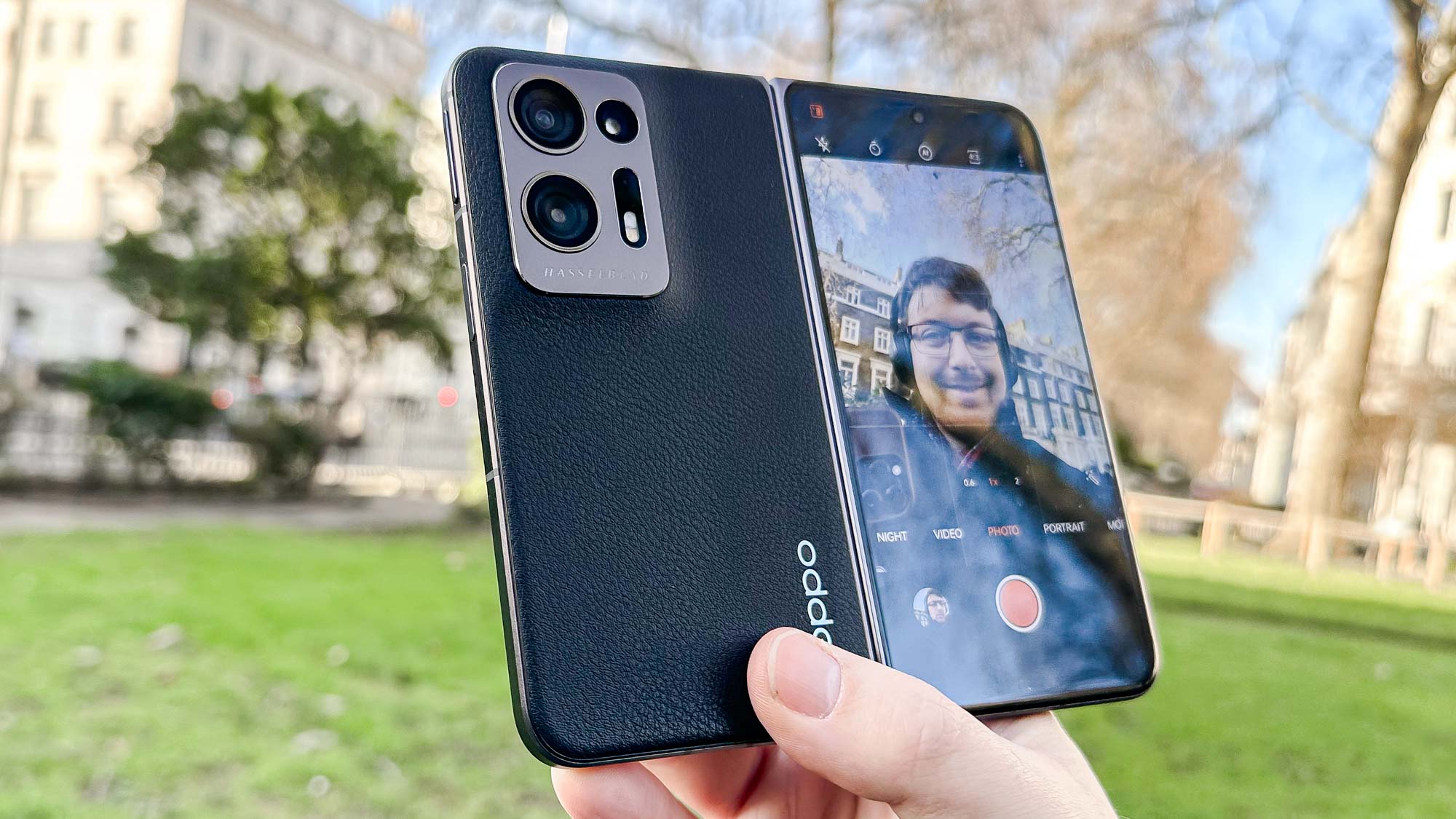
That feeds into the second downside of the Find N2: its software. ColorOS behaves mostly as you'd expect, and while it didn't come with Google Mobile Services installed, I was able to get it up and running easily. But even still the software's still got some untranslated parts that make using the phone a little tricky sometimes.
While it's not a default feature, the fact the Galaxy Z Fold 4 can work with a stylus can be very handy for certain users. There's no such option on the Find N2, meaning any doodling or note-taking will have to be done with your fingertip.
It's worth noting that the Find N2 has launched several months after the Galaxy Z Fold 4, they both use the older Snapdragon 8 Plus Gen 1 chipset. This is a powerful chip to be certain, but it's not the top available in 2023 now there's the Snapdragon 8 Gen 2 for the Galaxy S23 series, OnePlus 11 and other Android phones.
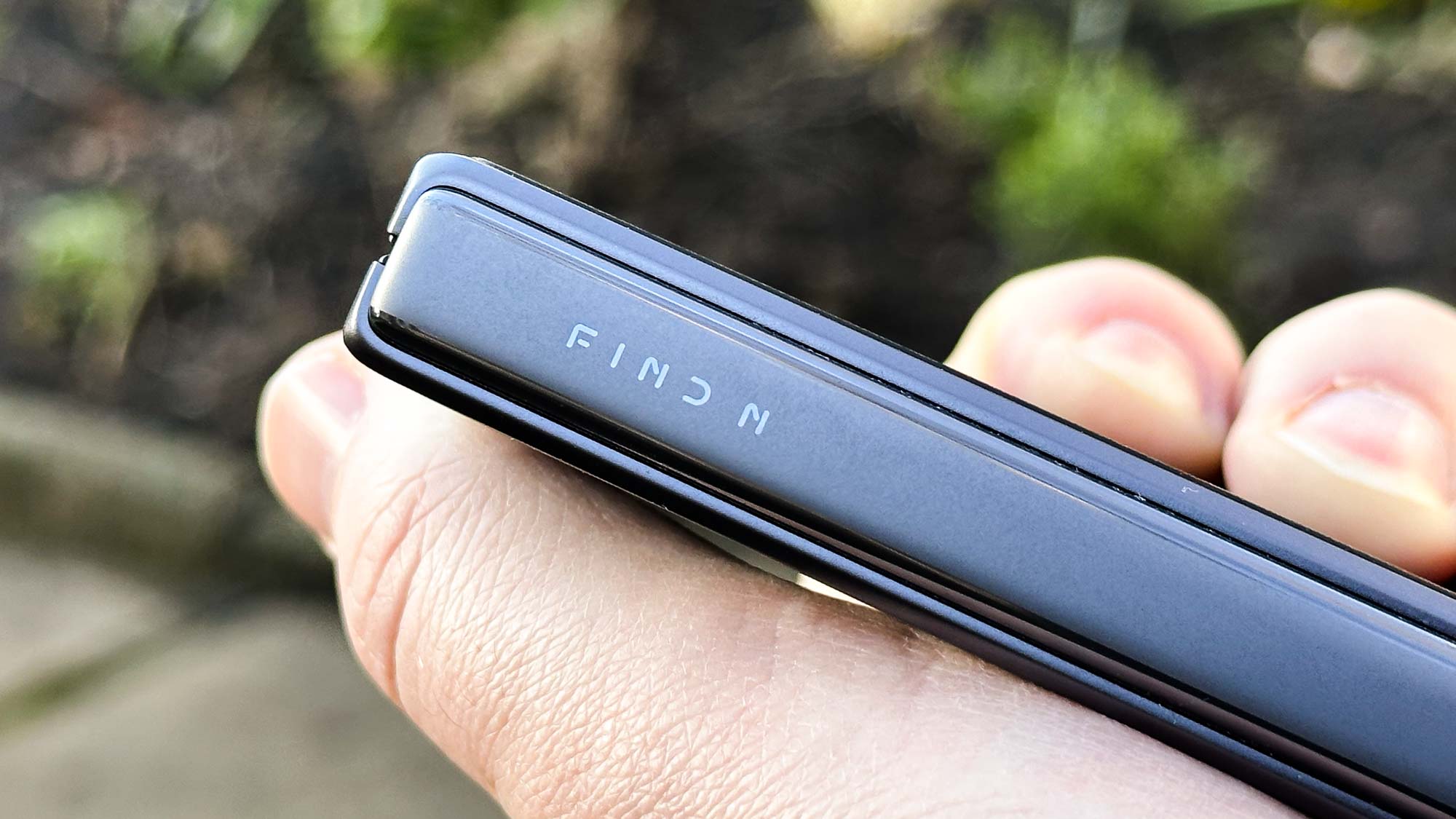
| Oppo Find N2 | Samsung Galaxy Z Fold 4 | |
| Geekbench 5 (single-core / multi-core) | 1,057 / 3,665 | 1,328 / 3,831 |
| 3DMark Wild Life Unlimited (score / FPS) | 11,184 / 66.3 | 8,819 / 52.8 |
| 3DMark Wild Life Extreme Unlimited (score / FPS) | 2,711 / 16.2 | 2,677 / 16.03 |
| Adobe Premiere Rush transcoding test (mins:secs) | 1:02 | 0:45 |
In benchmarking, the Galaxy Z Fold 4 is ahead in the Geekbench 5 CPU test, perhaps due to the extra RAM (12GB vs. 8GB) in the Samsung. But in graphics testing, the Find N2 comes out ahead, and by a considerable margin on the regular 3DMark Wild Life Unlimited test.
The Galaxy Z Fold 4 comes through again on the Premiere Rush transcoding test though, managing to process the video in three-quarters of the time it takes the Find N2.
Outlook
Compared to the Samsung Galaxy Z Fold 4, the Find N2 offers a more compact frame, a more usable display and a less obvious hinge crease, plus superior cameras, battery life and charging speeds. All of which give the Oppo phone a distinct advantage.

The main drawback is that this is a China-only phone, running China-specific apps and software. No doubt you'll be able to import the Find N2 using various auction sites, and I was able to get Google Play running on mine easily enough, but that doesn't take away from the fact this is still more difficult than the typical streamlined out-of-box setup you get with a phone sold officially in your country.
It's a shame it's hard to recommend anybody actually try and buy an Oppo Find N2, but hopefully for those of us buying phones in the U.S. and Europe, the competition from abroad will inspire Samsung to up its game, or for other big phone makers like Google or Apple to get on with releasing their Pixel Fold or iPhone Flip, respectively, to challenge Samsung's dominance. But if you can't wait for that, and aren't phased by a more technical moving-in process, the Oppo Find N2 there is great if you're willing to make the effort.

Richard is based in London, covering news, reviews and how-tos for phones, tablets, gaming, and whatever else people need advice on. Following on from his MA in Magazine Journalism at the University of Sheffield, he's also written for WIRED U.K., The Register and Creative Bloq. When not at work, he's likely thinking about how to brew the perfect cup of specialty coffee.
